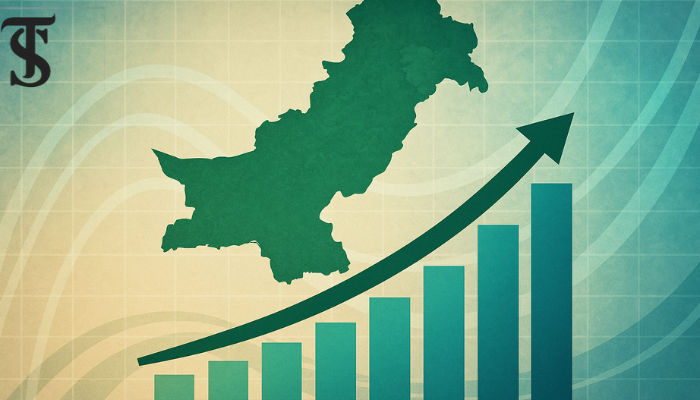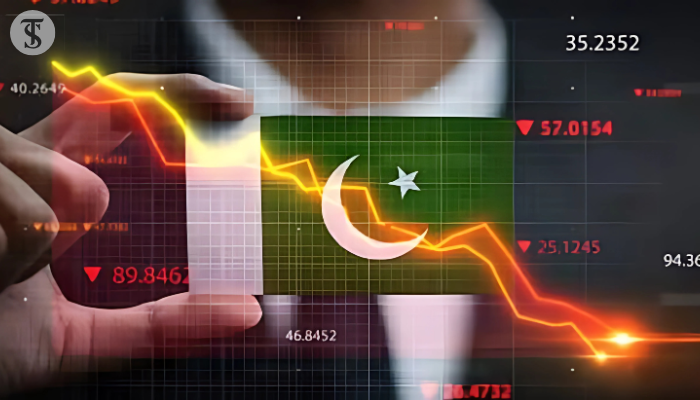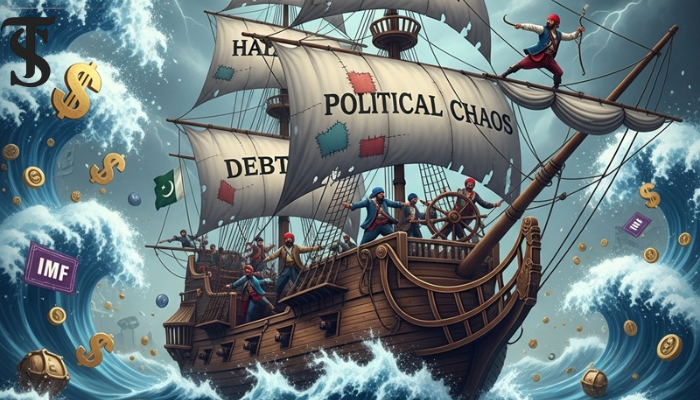Transforming Stability into Sustainable Reform

Pakistan’s economy has shown resilience and signs of stabilization, according to the Pakistan Economic Survey 2024–25. The survey highlights key macroeconomic indicators, sectoral performance, and policy directions that are crucial for understanding the government’s assessment of the economy. For instance, the economy achieved a GDP growth rate of 2.68% in FY2025, while inflation fell to a multi-decade low of 0.3% in April 2025. At the same time, the fiscal deficit narrowed to 2.6% of GDP and the primary surplus improved to 3.0%. Moreover, the current account swung from a deficit to a surplus of $1.9 billion, and foreign reserves stood at $16.64 billion as of May 27, 2025—a clear positive sign driven by broad-based stabilization across key indicators.
Furthermore, the stock market performed strongly, with the KSE-100 index rising 50% in FY2025. Public debt stands at Rs 76,007 billion, and Fitch upgraded Pakistan’s sovereign rating to B- (Stable). In addition, remittances grew by 11% to $32 billion, reinforcing the external sector’s strength. Nevertheless, a UN report revealed that economic privileges enjoyed by elite groups, the corporate sector, feudal lords, the political class, and the military add up to an estimated $17.4 billion—roughly 6% of Pakistan’s economy—while poverty, inequality, and social injustice continue to exacerbate instability for the poor and marginalized.
In terms of sectoral performance, agriculture—which contributes 23.54% to GDP and employs 37% of the labor force—grew by only 0.56%, with livestock up 4.72% but major crops down 13.49%. Meanwhile, industry expanded 4.77%, led by wearing apparel, textiles, pharmaceuticals, and automobiles, and services—the main growth driver, accounting for 58.4% of GDP—grew 2.91%.
At the same time, tax revenue increased by 26.3% to Rs 9.3 trillion and non-tax revenue surged 68% to Rs 4.2 trillion. Consequently, the policy rate was cut by 1,100 basis points to 11.3%, with an inflation target of 5–7% in the medium term. Moreover, exports rose 6.4% to $26.9 billion, imports climbed 7.5% to $48.3 billion, and remittances hit a record $31.2 billion—up 31% year-on-year—while FDI stood at $1.8 billion (down 2.7%). Reserves of $14.3 billion now cover 3.6 months of imports.
Turning to IT, telecom, and education, IT exports increased 23.7% to $2.825 billion and telecom revenue reached Rs 803 billion, with 199.9 million subscribers and teledensity at 81.3%. Literacy rates improved to 68% for males and 52.8% for females, although 38% of children remain out of school. Meanwhile, with over 220 million people, Pakistan faces epic healthcare challenges: the system is woefully inadequate and among the lowest-spending globally, yet total health spending rose 9.7% to Rs 924.9 billion, and key initiatives include the National Action Plan for Health Security and programs targeting hepatitis C and diabetes.
Demographically, the population reached 241.5 million, with 53.8% in the working-age group, prompting initiatives such as PM Youth Loans and Skills for All to boost employment. At the same time, Pakistan remains highly climate-vulnerable despite contributing less than 1% to global emissions, and the government has launched the Recharge Pakistan program, a National Adaptation Plan, and Green Sukuk to address climate risks.
Looking ahead to FY2025–26, the budget targets 4.2% GDP growth, a deficit of 3.9% of GDP, and a primary surplus of 2.4%, with inflation projected at 7.5%. Among the measures are tax relief for salaried taxpayers, a reduction in the super-tax on firms, and increased allocations for social protection (e.g., BISP). The budget also prioritizes infrastructure, exports, and digital transformation, while the URAAN Pakistan framework aims for export-led, investment-driven growth. Notably, the investment-to-GDP ratio rose to 13.8%, the saving-to-GDP ratio increased to 14.1%, and per-capita income climbed 9.7% to $1,824.
Finally, a petition circulating in Pakistan calls for major parliamentary reforms: ending pensions and arbitrary pay increases for legislators, subjecting them to the same healthcare system and laws as the public, abolishing concessions (travel, utilities, phone bills), banning those with criminal records from office, and imposing a retirement age of 60. Such proposals underscore growing public demand for accountability and equity. While Pakistan’s economic indicators show signs of stabilization, significant risks remain—from global trade tensions and climate impacts to the need for deeper structural reforms in agriculture, digital infrastructure, and labor markets—so continued focus on social welfare, economic stability, and systemic reform will be essential if meaningful and sustainable progress is to be achieved.
The author is a columnist and a CSS mentor.






